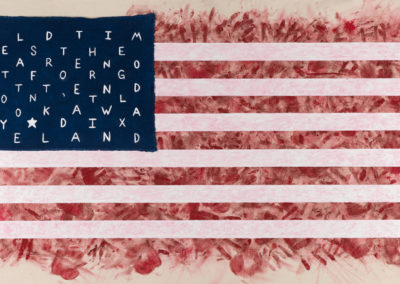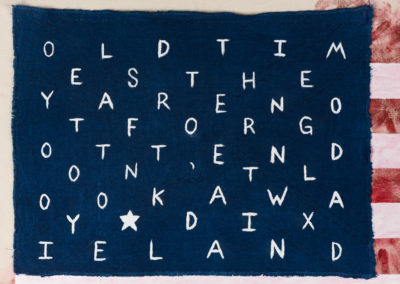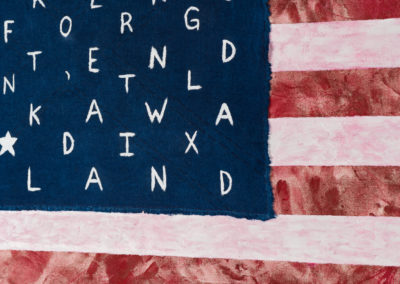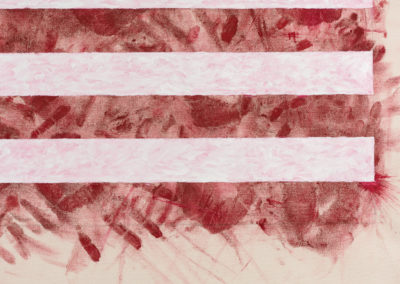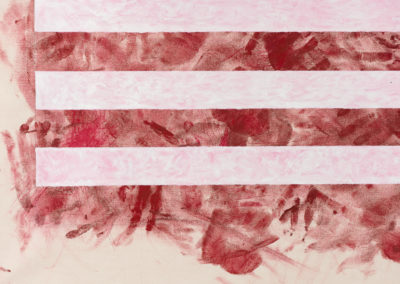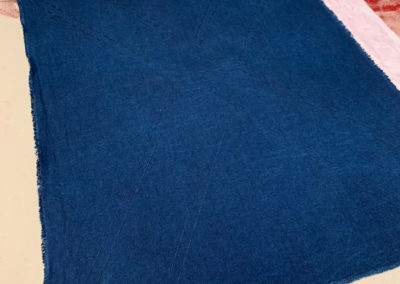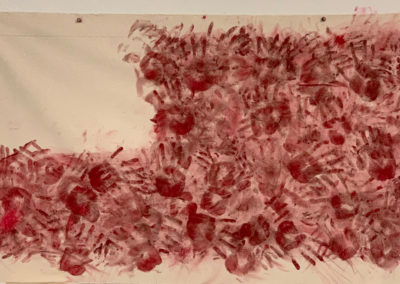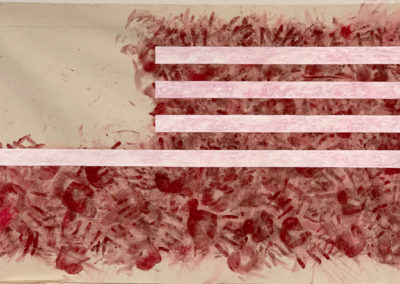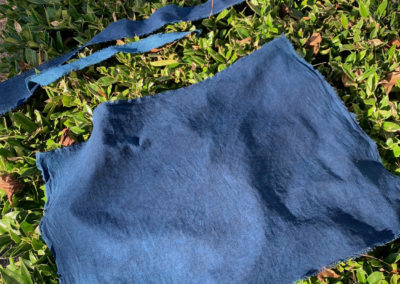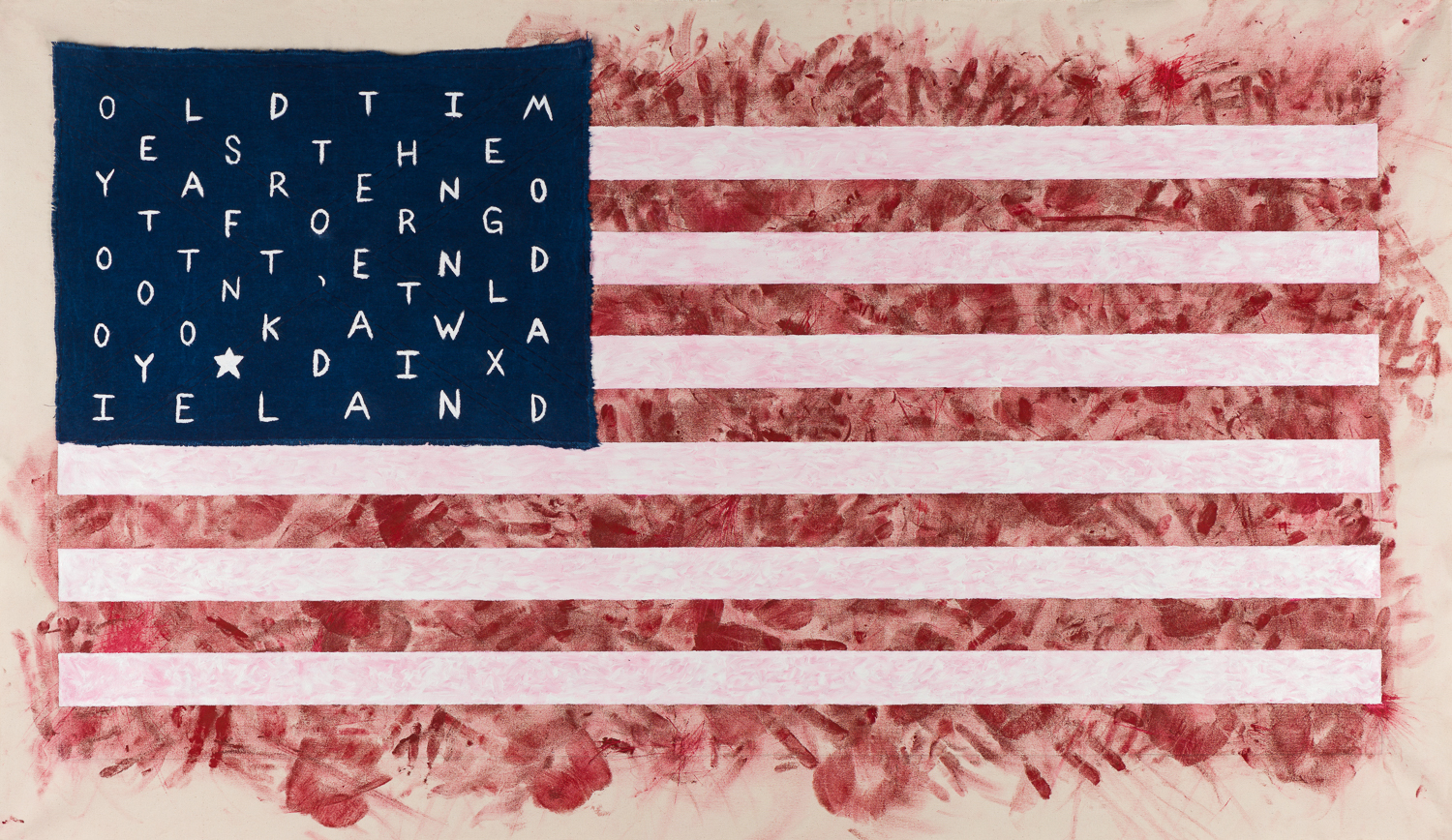
Don’t Look Away
2020
Watercolor, Acrylic, Indigo Dye, and Thread On Canvas
36×63″
Limited edition prints also available
When claiming a collective identity, what responsibilities of the past carry over into the present? If there is blood on our collective hands does it matter if it isn’t our individual blood or isn’t on our individual hands? Is it any surprise that wounds from the past would bleed through time? What is woven into the fabric of our society?
Unprimed cotton canvas was chosen for this piece because of cotton’s complex place in the economic and social history of our country and SC in particular. Great riches were made on the backs of slaves.
The red stripes and overall background is made up of red, bloody handprints, symbolic of the blood spilled in the creation of a new country. Some shed their blood willingly, but many others did so only by force.
The white stripes are painted over the handprints in such a way that the red bleeds through intending to ask the question if, with such a bloody past, it’s any surprise that the past would bleed through into the present? They also mimic bars, again referencing the enslaved.
The blue square is another piece of cotton canvas that was hand dyed with Indigo. Indigo was chosen for its color but also because of its important role in the early SC economy. Slaves were responsible for the production of indigo, as with cotton and rice, yet didn’t participate in the riches their labor produced.
Sewn into the blue square is a depiction of the flag commonly called the Confederate flag, a reference to the Civil War and a time so divided that we resorted to fighting and killing one another. It was done in this way to resemble a scar, similar in color to the background yet slightly raised, an eternal reminder of the failings of our past yet also a reminder that we have the opportunity to choose to be better than we were before.
On the blue square are painted slightly altered words from the song Dixie and also the source of the title for this piece. In order for anything to be addressed we must not look away but instead choose to soberly look at ourselves and our history thorough a diverse set of eyes and experiences; it is not patriotic to refuse to look at ourselves critically. The single star sits in reminder of the American ideal of unity, of freedom and justice for everyone, not just the wealthy or those of a particular race.
It is my hope that this piece will result in the viewer taking a look at our painful past with an understanding of how it continues on today. None of us standing here created this past yet we have all inherited the responsibility for what happens next. We must not look away, but instead choose to create a better future for us all. Have we yet lived up to the ideals of the United States of America?
*click to enlarge

